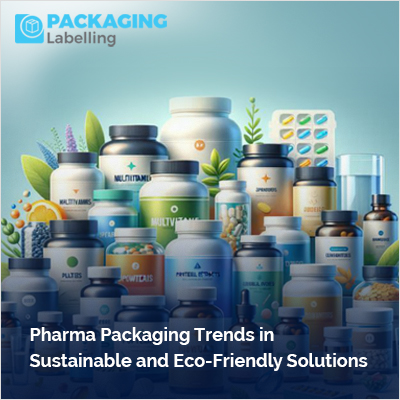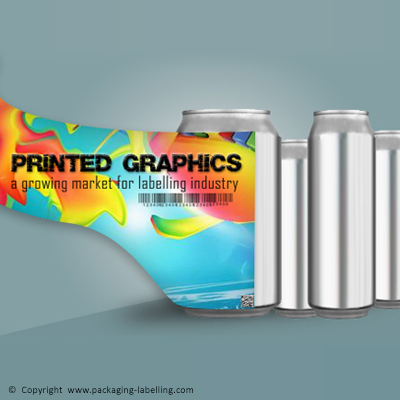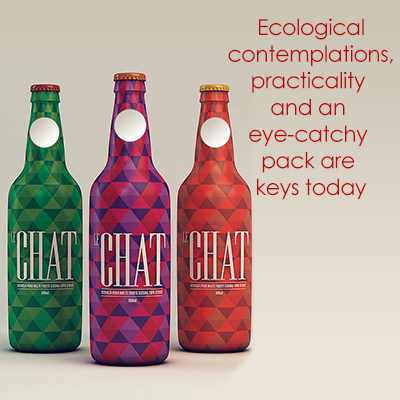Pharma Packaging Trends in Sustainable and Eco-Friendly Solutions

The pharmaceutical industry, recognizing its role in environmental stewardship, has embarked on a transformative journey towards sustainable and eco-friendly packaging solutions. In response to global concerns about environmental impact, waste reduction, and resource conservation, pharmaceutical companies are actively reevaluating their packaging strategies. This shift represents a commitment to balancing the critical need for effective and safe drug delivery with a responsibility toward ecological sustainability. This introduction explores the evolving trends in sustainable pharmaceutical packaging, highlighting innovative approaches that address environmental challenges while maintaining the industry's commitment to regulatory compliance and patient well-being. As we delve into the dynamic landscape of eco-friendly solutions, it becomes evident that the pharmaceutical sector is not only adapting to change but also playing a crucial role in shaping a greener and more responsible future.
Recyclable Materials:
A notable trend in the pharmaceutical packaging landscape is the growing preference for easily recyclable materials, aligning with the broader movement toward environmental sustainability. Pharmaceutical companies are actively shifting away from traditional packaging solutions with high environmental footprints and are instead embracing materials that can be efficiently recycled within existing waste management systems.
| Read More: Navigating Regulatory Challenges in Pharma: The Role of Innovative Packaging Solutions |
Cardboard and paper have emerged as favored choices due to their recyclability and biodegradability. These materials not only offer robust protection for pharmaceutical products but also contribute to reducing the overall carbon footprint associated with packaging production and disposal. Additionally, certain types of plastics with recycling capabilities are being explored, emphasizing the importance of choosing materials that can be reintegrated into the manufacturing cycle.
This emphasis on recyclability extends beyond the initial use phase, addressing the broader concerns associated with post-consumer waste. By incorporating easily recyclable materials into pharmaceutical packaging, companies are taking proactive steps to minimize their impact on landfills and contribute to a circular economy. As regulatory bodies and consumers increasingly prioritize sustainable practices, the adoption of recyclable materials stands as a significant stride towards a more environmentally conscious and responsible pharmaceutical packaging industry.
| Also Read: Why Pharma Packaging Matters: Exploring Safety, Compliance, and Innovation |
Biodegradable Packaging:
In response to the escalating demand for environmentally friendly practices, the pharmaceutical industry is witnessing a pronounced trend towards the adoption of biodegradable packaging materials. These materials are specifically engineered to undergo natural decomposition over time, presenting a sustainable alternative to conventional packaging that often contributes to long-lasting environmental impact.
A noteworthy innovation in this domain is the exploration of bioplastics, which are derived from renewable resources such as corn starch, sugarcane, or other plant-based materials. Bioplastics retain the protective and functional qualities required in pharmaceutical packaging while offering the distinct advantage of being biodegradable. As these materials break down, they contribute to the reduction of plastic pollution and alleviate concerns associated with the persistence of traditional plastics in ecosystems.
The embrace of biodegradable packaging aligns with the pharmaceutical industry's commitment to minimizing its ecological footprint. By integrating these innovative materials into their packaging designs, companies are not only addressing immediate environmental concerns but also actively participating in the broader global efforts toward sustainability. As the development and utilization of biodegradable packaging continue to evolve, they exemplify a conscientious approach to packaging solutions that prioritize the well-being of both patients and the planet.
Reduced Packaging Waste:
An imperative shift within the pharmaceutical industry revolves around a concerted effort to minimize packaging waste. Companies are strategically embracing efficient design principles and right-sizing packaging for their products, aiming to strike a balance between safeguarding pharmaceutical integrity and mitigating the environmental impact associated with excess packaging.
This trend is driven by a dual commitment environmental responsibility and economic prudence. By streamlining packaging designs, pharmaceutical companies not only contribute to a significant reduction in their environmental footprint but also realize cost savings in terms of materials and transportation. Optimal packaging dimensions not only enhance the sustainability profile of the industry but also ensure that resources are utilized judiciously throughout the entire product lifecycle.
This approach reflects a holistic understanding of the life cycle of pharmaceutical packaging, from production to disposal. Companies are increasingly recognizing that an emphasis on reduced packaging waste not only aligns with evolving regulatory expectations but also resonates with environmentally conscious consumers. As the pharmaceutical sector continues to refine its strategies, the pursuit of efficient packaging solutions stands as a pivotal initiative, fostering a more sustainable and economically viable future for pharmaceutical packaging practices.
Reusable Packaging:
A noteworthy evolution in pharmaceutical packaging practices involves the increasing adoption of reusable packaging concepts. This strategic shift aims to minimize environmental impact by designing packaging solutions that can be utilized multiple times for either the same product or different pharmaceutical items. This approach is particularly pertinent for items integral to treatment regimens, such as inhalers or other medical devices.
By prioritizing reusability, pharmaceutical companies not only contribute to waste reduction but also align with the principles of a circular economy. Designing packaging with durability and multiple-use capabilities not only promotes environmental sustainability but also addresses the growing awareness among consumers about the ecological impact of single-use packaging.
In the context of healthcare, where certain devices are integral to patient well-being, reusable packaging ensures that the environmental benefits do not compromise the efficacy and safety of pharmaceutical products. This emerging trend underscores a commitment to responsible and innovative packaging solutions within the pharmaceutical sector, marking a significant step towards a more sustainable and environmentally conscious industry. As the momentum for reusable packaging builds, it signifies a collaborative effort to balance patient needs with environmental stewardship.
Pharmaceutical Blister Packaging Innovations:
In the realm of pharmaceutical packaging, blister packaging has become a focal point for innovation. Companies are actively exploring novel approaches to enhance sustainability within this common packaging format. One notable trend involves the adoption of materials that are not only effective in safeguarding pharmaceutical products but are also easier to recycle. This shift aligns with the broader industry movement towards eco-friendly packaging solutions.
Additionally, innovations in blister packaging extend to the reduction of unnecessary components, contributing to a streamlined and more sustainable packaging process. By eliminating excess materials, such as layers or coatings that do not serve a vital purpose, pharmaceutical companies not only reduce their environmental footprint but also enhance the overall efficiency of the packaging lifecycle. This optimization is essential in meeting the dual objectives of environmental responsibility and cost-effectiveness.
These blister packaging innovations underscore the industry's commitment to staying at the forefront of sustainable practices. As pharmaceutical companies continue to refine their packaging strategies, the focus on blister packaging serves as a testament to the ongoing pursuit of environmentally conscious solutions without compromising the integrity and safety of pharmaceutical products. It reflects a harmonious blend of innovation, functionality, and environmental stewardship in the dynamic landscape of pharmaceutical packaging.
Smart Packaging for Reduced Waste:
The advent of smart packaging technologies is reshaping the landscape of pharmaceutical packaging with a focus on sustainability. By integrating intelligent features, such as sensors and data tracking, companies can enhance inventory management, minimize over-packaging, and ensure the optimal freshness and effectiveness of pharmaceutical products. This not only improves operational efficiency but also contributes significantly to sustainability goals by mitigating unnecessary waste.
Smart packaging allows for real-time monitoring of factors like temperature, humidity, and product usage, enabling more accurate control of storage conditions. This data-driven approach not only reduces the risk of spoilage but also facilitates precise inventory management, preventing excessive packaging and minimizing the environmental impact associated with packaging materials.
Moreover, the implementation of smart packaging aligns with the growing consumer demand for transparency and quality assurance. Patients and regulatory bodies alike benefit from the assurance that pharmaceuticals are stored and transported under optimal conditions, ensuring both efficacy and safety. As the pharmaceutical industry continues to embrace smart packaging solutions, the convergence of technology and sustainability emerges as a powerful strategy for waste reduction, marking a significant step towards a more resource-efficient and environmentally conscious future.
Supply Chain Sustainability:
In a comprehensive approach towards environmental responsibility, pharmaceutical companies are extending their focus beyond immediate packaging concerns to address sustainability throughout the entire supply chain. This strategic shift encompasses responsible sourcing of raw materials and the optimization of transportation methods, aiming to holistically reduce the overall environmental impact associated with pharmaceutical production and distribution.
Companies are actively engaging in the ethical sourcing of raw materials, prioritizing suppliers who adhere to sustainable practices and environmental standards. This not only bolsters the integrity of the pharmaceutical supply chain but also contributes to the preservation of biodiversity and ecosystems.
Optimizing transportation methods is another key facet of supply chain sustainability. Efforts to reduce carbon emissions and energy consumption are underway, with companies exploring eco-friendly transport options, route optimization, and efficient logistics practices. By minimizing the environmental footprint of transportation, pharmaceutical companies are aligning their supply chains with global sustainability goals and regulatory expectations.
This broader perspective on supply chain sustainability demonstrates a commitment to addressing environmental concerns at every stage of the pharmaceutical lifecycle. As the industry continues to evolve, this holistic approach is becoming integral to corporate social responsibility and reflects a proactive stance in mitigating the broader environmental impacts associated with pharmaceutical manufacturing and distribution.
Regulatory Compliance:
In response to a global shift towards environmental consciousness, regulatory bodies are placing a heightened emphasis on sustainable practices within the pharmaceutical industry. Recognizing this, pharmaceutical companies are proactively aligning their packaging strategies with evolving regulations to ensure a harmonious integration of compliance and sustainability objectives.
The intersection of regulatory compliance and sustainability is particularly evident in the evolving landscape of pharmaceutical packaging. Companies are meticulously adapting their practices to meet stringent environmental standards and guidelines set forth by regulatory authorities. This includes considerations for the use of recyclable materials, reduction of packaging waste, and adherence to eco-friendly innovations.
By prioritizing sustainable packaging practices, pharmaceutical companies not only enhance their environmental stewardship but also safeguard their standing within a regulatory framework that increasingly values and mandates sustainable initiatives. The synergy between regulatory compliance and sustainability underscores a pivotal evolution in the pharmaceutical industry, where responsible practices are becoming integral to meeting not only patient needs but also global expectations for environmentally conscious and compliant operations. As regulations continue to evolve, this proactive alignment ensures that pharmaceutical packaging remains at the forefront of sustainable and compliant industry practices.
Consumer Education:
Recognizing the pivotal role of consumers in driving sustainable practices, there is a growing emphasis within the pharmaceutical industry on educating end-users about the eco-friendly aspects of packaging. Clear and informative labeling, coupled with explicit communication regarding recycling instructions, serves as a powerful tool to empower consumers to make environmentally conscious choices.
Pharmaceutical companies are increasingly adopting transparent communication strategies to convey the sustainability features of their packaging to consumers. Labels indicating recyclability, the use of eco-friendly materials, and proper disposal instructions are becoming integral components of packaging designs. By providing easily understandable information, companies aim to bridge the gap between eco-conscious practices and consumer behavior.
This educational approach not only fosters environmental awareness but also cultivates a sense of responsibility among consumers. As sustainability becomes a priority in purchasing decisions, informed consumers are more likely to choose products with eco-friendly packaging, thereby influencing market dynamics and encouraging pharmaceutical companies to further enhance their sustainable practices.
In this era of heightened environmental consciousness, the collaboration between pharmaceutical companies and consumers through clear and accessible information reflects a shared commitment to fostering a more sustainable future. Through consumer education, the pharmaceutical industry is not only responding to evolving expectations but also actively engaging individuals as partners in the collective journey toward environmental responsibility.
Collaboration and Industry Initiatives:
Acknowledging the interconnected nature of sustainability challenges, pharmaceutical companies are increasingly embracing collaboration within the industry and actively participating in broader sustainability initiatives. This collective effort is instrumental in fostering the development and widespread adoption of best practices in eco-friendly packaging.
Industry collaboration facilitates the sharing of knowledge, experiences, and innovative solutions among pharmaceutical manufacturers. Through partnerships, companies can collectively address common challenges, such as finding sustainable sourcing options, optimizing packaging designs, and navigating regulatory landscapes. This collaborative approach enables a more holistic and efficient advancement towards sustainable packaging practices.
Participation in broader sustainability initiatives, whether initiated by industry associations, non-governmental organizations, or governmental bodies, provides pharmaceutical companies with a platform to contribute to global sustainability goals. By aligning with these initiatives, companies not only demonstrate their commitment to environmental responsibility but also gain access to shared resources and collective expertise, further accelerating the pace of sustainable innovation.
The emphasis on collaboration and industry-wide initiatives underscores a collective recognition within the pharmaceutical sector that addressing sustainability challenges requires a unified approach. As companies work together and engage in broader initiatives, the industry becomes a driving force in shaping a more sustainable future for pharmaceutical packaging, transcending individual efforts for the benefit of both the environment and society.
Conclusion:
In conclusion, the pharmaceutical industry is undergoing a transformative shift towards sustainable and eco-friendly packaging solutions. From recyclable materials and biodegradable packaging to reduced waste and smart packaging technologies, companies are proactively embracing innovative practices. Concurrently, a focus on supply chain sustainability, regulatory compliance, consumer education, and collaborative industry initiatives reflects a comprehensive commitment to environmental responsibility. As the pharmaceutical sector continues to evolve, this collective effort signifies a crucial step towards a more sustainable, efficient, and environmentally conscious future in pharmaceutical packaging.









